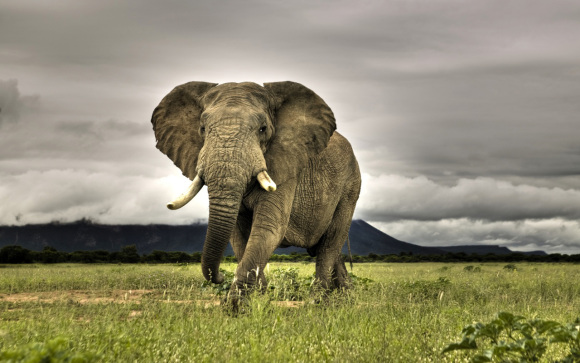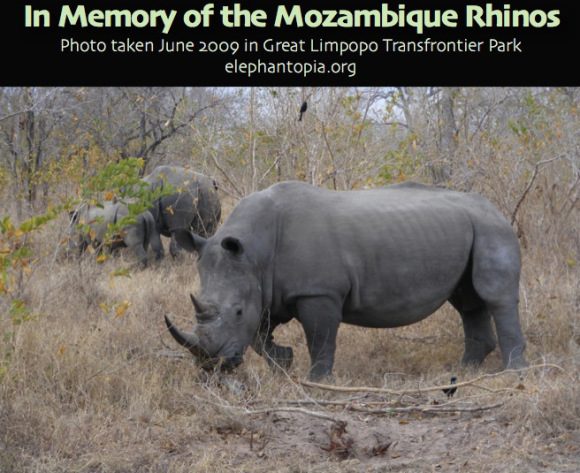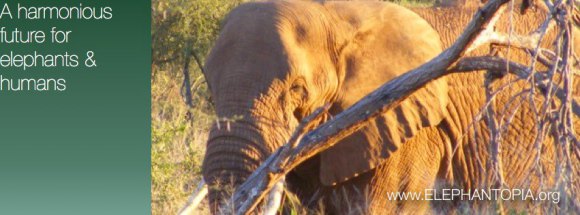 I’m Elizabeth Chitwood, and I love elephants. This past week, HBO shared a wonderful documentary, An Apology to Elephants, narrated by Lilly Tomlin (who starts the program off, “I’m Lilly Tomlin, and I love elephants” - such a great way to introduce oneself!) In 40 minutes, the documentary was able to share basic elephant facts about how elephants live in the wild, explain the dangers of circuses, challenge zoos to reform their elephant habitats and practices, and show the destruction of the ivory trade. I would like to visit each of these in more detail below.
I’m Elizabeth Chitwood, and I love elephants. This past week, HBO shared a wonderful documentary, An Apology to Elephants, narrated by Lilly Tomlin (who starts the program off, “I’m Lilly Tomlin, and I love elephants” - such a great way to introduce oneself!) In 40 minutes, the documentary was able to share basic elephant facts about how elephants live in the wild, explain the dangers of circuses, challenge zoos to reform their elephant habitats and practices, and show the destruction of the ivory trade. I would like to visit each of these in more detail below.
1. Basic Elephant Facts. The first five minutes were filled with amazing video of elephants in Africa being elephants: touching one another, playing, grazing, drinking, feeding…or as the film stated, “Elephants doing what they are supposed to do.” This section was summed up by Joyce Poole who shared, “When the student is ready, the teacher will appear…Elephants have appeared to teach us. The elephants need our help.” Help from what? That led into the second point of the film.
2. Dangers of the Circus. People have always been fascinated by these magnificent creatures, so using them for entertainment is nothing new. The documentary explained how in the past, they have been revered, worshipped, used in war, used for heavy labor, and used for amusement. It appears the world’s largest land mammal cannot hide from human greed and need. The first elephant to arrive in North America for a circus was in 1796 to do fun tricks and stunts. But to get to North America, they were forcefully taken from the wild (often as babies), tortured and abused to perform, even killed in horrific ways (Thomas Edison used electricity to kill Topsy a circus elephant in 1903).

Circus performance with elephants in unnatural positions
Just as circuses are not a thing of the past, neither are the “training methods.” Today, millions of people attend the circus around the world. When they see the elephants in costume balancing on one leg atop a small bench, they wonder “how do they learn to do that?” Through the use of weapons called bullhook (an object with a sharp point used on sensitive pressure points on the elephant’s ears, eyes and anus). Elephants live in constant fear of pain. A trainer on the documentary states that bullhooks in the hands of someone uncaring or unthinking can create a significant amount of damage (physically and mentally). A vet for circus elephants also described the screams he would often hear from the elephant training sessions. How else, but through blunt force, could a human train a 12,000 lbs animal to balance on one leg?! And why do millions support this each and every year? Joyce Poole hopes it is because the majority of the public does not know the horrors and animal abuse the elephants are subjected to. These millions of people, children to aged adults, could not be that cruel, could they? Many circuses claim that they are simply having the elephant re-enact things they do naturally in the wild. However, as Joyce Poole states, when she sees an elephant in a circus, “it looks like and elephant, but it is not behaving like an elephant.” They may be agile, but never has she or Cynthia Moss, seen an elephant in the wild sit on their heads, or walk on their hind legs. That is purely for human entertainment. After this portion of the documentary, it is evident that there is an elephant in the room. The problem is, that the elephant is in a room. This is a call to get elephants out of the room. To get elephants out of circuses. But where would they go?
3. Zoo reform. This section of the film starts with a look at PAWS, a sanctuary in California for retired circus elephants. They are hoping their sanctuary will raise the bar for all elephants in captivity. In CA, it is still legal for elephants to be chained for up to 18 hours a day. With their natural need to graze and walk, many elephants develop ticks like swaying back and forth while chained so that the endorphins can be released allowing them to feel like they have been moving. However, PAWS is confident that reform is possible: “You can fix a zoo…You can’t fix a circus.”

Elephants at the Oakland Zoo with grass and space to roam

PAWS elephant sanctuary, looks and feels like Africa
And the Oakland Zoo is highlighted as an exemplary zoo fixing itself. Trainers there recognize it is not ideal for elephants to live in captivity, but the truth of the matter is, they do. So it’s time to make the best of it, and treat them with the respect they deserve. In the past, zoos used a method of elephant training called “free contact” allowing the trainers to be in the same enclosure with the elephants using bullhooks to control them, which often led serious problems including trainer deaths. However, today the Oakland Zoo uses a non-contact method and target poles which allows the elephant to be in control of itself and the human to be safe, not entering the elephant enclosure. Although there are many mixed feelings about zoos from scientists who work with elephants in the wild, it is widely accepted that as long as there are zoos, it is imperative to provide the best possible environment for elephants. This means real grass, larger areas for grazing, multiple elephants for socialization and no human contact in the yard. The Oakland Zoo hopes that more zoos follow their lead in elephant care, so that the elephants can continue to provide opportunities to teach future generations about this magnificent animal and create future advocates for elephants. And advocates are something elephants desperately need. According to Dr. Ross MacPhee, elephants have been around for 50,000 years, inhabiting every continent in the world except Australia and Antarctica. How is it that in the past 10,000 years their survival has collapsed to where it is today? Leading us into the final point of the film.

WorldNews NBC 1500 elephant tusks seized enroute to China
4. The Ivory Trade. Currently it is estimated that 38,000 elephants are killed each year for their ivory. That gives us about 10 more years before the elephant will be extinct. And when the elephant is extinct, this will affect the entire ecosystem. There are 38 trees in the forest of central Africa that rely solely on the elephant for propagation. Many species of birds and small mammals rely on elephants ofr water and food. And humans aren’t exempt. As stated in the film, “It’s a fallacy to think that human beings are separate from the rest of life.” Not caring for the elephant, not caring for the ecosystem, simply shortens the time of survival left for us here on earth. And if we can’t learn this lesson from the elephants, the world’s largests living land mammal, who can teach us?
Elephants are the last great majestic animals. It’s time for creative solutions to be found for elephants, the world’s largest land mammal, to continue to live in harmony with humans, the world’s most dominant land mammal.
The question remains, will the solution be found before it’s too late?

Like this:
Like Loading...











